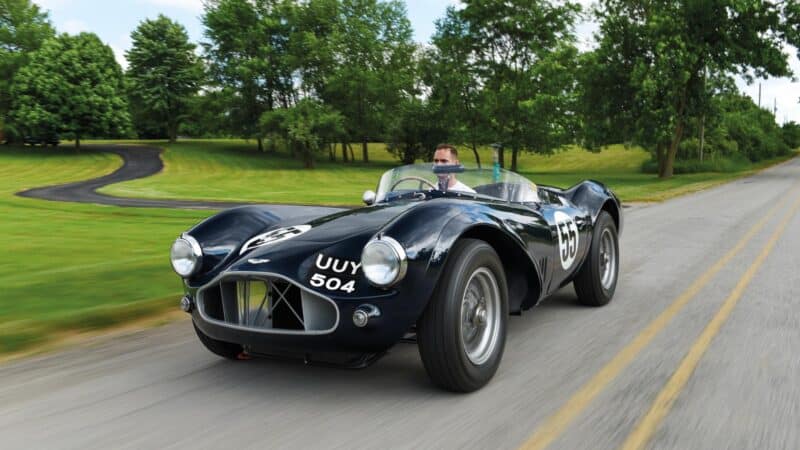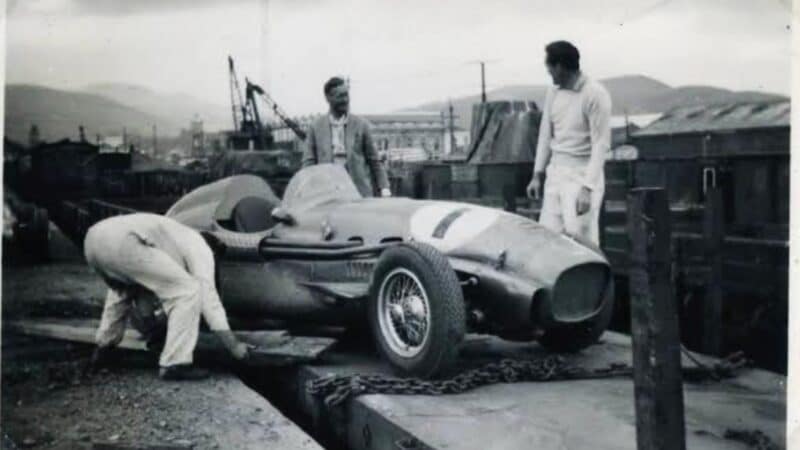The marque’s first foray was with the long-forgotten DP155, an experimental prototype which went on an Antipodean adventure before going through almost as many owner-led transformations as the company itself. In this month’s magazine, Mark Bisset tells the fascinating story.
Commissioned in 1953, Aston was then enjoying great sports car success with its DB3S, but had a nagging feeling it should be involved in single-seater racing too.
Mechanics John King and Richard Green got to work on modifying a “narrower” DB3S twin-tube frame, while renowned designer Frank Feeley styled the elegant aluminium bodywork.
Powered by a 2.9-litre engine, the car could only manage 180bhp – as Bisset emphasises: “well short of the contemporary F1 Tipo 625 Ferrari and Maserati 250F, which were developing at least 200bhp by early 1954.” When increased power was considered with a DB3S engine instead, so its rivals had leapt ahead again.

DP155 in its final form
Corey Escobar ©2023 Courtesy of RM Sotheby’s
The neglected DP155 didn’t even reach a proper testing programme with sports cars projects given precedence, but it was put forward for the 1956 Kiwi Formule Libre series during the world championship winter break.
“Parnell – a post-war star and works Aston Martin driver since 1951 – identified these events as offering useful race testing and earnings during the northern winter, perhaps in conversation with Peter Whitehead and Tony Gaze, veterans of the trip to the ‘Land of The Long White Cloud’,” says Bisset.


